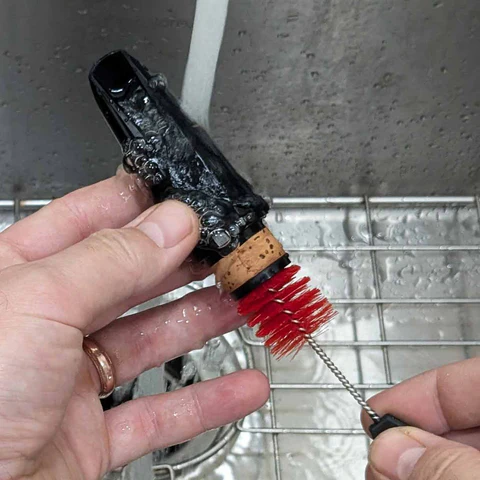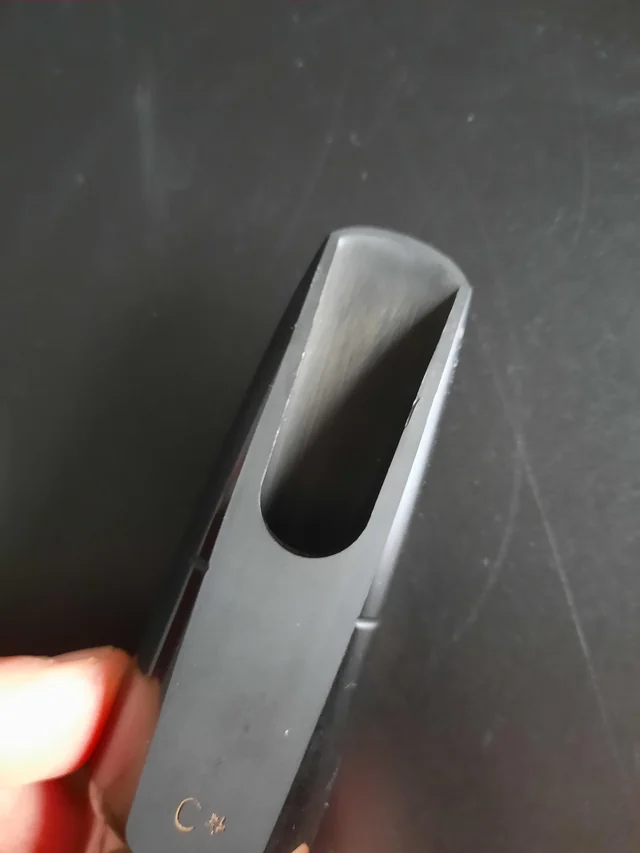One of the most important parts of the saxophone or clarinet for generating the sound is the mouthpiece. Making sure you take good care of it will prolong its life and ensure ease of playing. The facing of the mouthpiece including the tip and rail where the reed meets the mouthpiece are particularly susceptible to damage. Here's a few tips.

Regular Cleaning (Weekly - Monthly depending on amount of use)
Give it a wash!
- Use lukewarm water and a mild detergent (think like washing fine crystal). Avoid using hot water as it can case hard rubber to oxidize (discolor).
- You can use a soft brush to remove build up inside. A mouthpiece brush or soft toothbrush works well.
- Dry thoroughly afterwards by patting dry with a soft cloth or using compressed air (not hot air/heat gun). Avoid leaving it wet with moisture sitting on it as this can leave marks.
- You can also use a specifically designed mouthpiece disinfectant (such as sterisol or Sterispray) to ensure free of bacteria. Each brand has their own instructions (duration of exposure, rinse required etc) Make sure you follow them for the treatment to be effective and not cause damage.
Do Not Use
- Alcohol swabs or harsh chemicals/general disinfectants. These can degrade the mouthpiece materials such as hard rubber and remove finish or writing.
- Hot water. It can accelerate oxidation and warp the mouthpiece.
Where possible also avoid prolonged exposure to sunlight/UV. Most important for hard rubber mouthpieces.
Deep Cleaning (As Needed)
For metal mouthpieces, over time you can start to get a buildup of mineral deposits inside the mouthpiece, particularly if regular cleaning hasn't been conducted. To remove this, you can use a diluted vinegar solution. Dilute white vinegar with water and soak mouthpiece for a few minutes, use a soft brush to help dislodge build up then rinse and dry. You can repeat several times if the buildup is severe. For very stubborn build up ultrasonic cleaning can also help.
General Tips
Always store your mouthpiece in a case or mouthpiece pouch.
Remove the reed when not playing
Store away from direct sunlight and avoid temperature extremes.
Use a mouthpiece cap to protect the top Helps protect it when not in use.
If storing with a ligature on, use a piece of cork or similar material between the face of the mouthpiece and the ligature to ensure it doesn't scratch.

Damage
The most common issues we see are small dings and scratches in the tip and rails. While often still playable this type of damage will usually decrease the responsiveness of the mouthpiece and should be addressed. The good news is that it can often be repaired by a competent technician or mouthpiece refacer.
While touching on refacing, often the face of the mouthpiece - the flat part where the reed sits on - isn't perfectly flat. This can reduce responsiveness. By having this leveled you can often improve the mouthpiece immediately.
